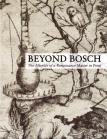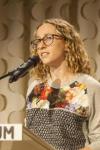Marisa Bass
Bio
Marisa Bass is a scholar of early modern art in northern Europe, with a focus on intersections between art and intellectual culture in the Netherlands. Her research interests include the representation of nature, the cult of images, portraiture, Renaissance notions of imagination and invention, print culture, and the funerary monument.
Her first book, Jan Gossart and the Invention of Netherlandish Antiquity (Princeton 2016) takes the mythological paintings of Jan Gossart and the local revival of antiquity in the Netherlands as a starting point to critically redefine the notion of a “northern Renaissance.” She also recently co-curated with Elizabeth Wyckoff the exhibition Beyond Bosch: The Afterlife of a Renaissance Master in Print, which explores Hieronymus Bosch’s neglected legacy in the print medium well into the seventeenth century. The exhibition opened at the St. Louis Art Museum in 2015 and traveled to the Harvard Art Museums in early spring 2016.
Her second book, Insect Artifice: Nature and Art in the Dutch Revolt, is forthcoming with Princeton University Press in 2019.
This study traces how the religious and political upheaval of the mid-sixteenth-century Low Countries spurred engagement with the new science of natural history, and particularly how the experience of iconoclastic destruction and inquisition motivated a turn to the representation of nature as a site of generation, transformation, and rebirth. At its center is a microhistory of the virtuosic artist and polymath Joris Hoefnagel, who fled into exile from the Netherlands in response to the wartime upheaval of the Revolt, and whose stunning miniature paintings of animals and insects embody his desire to understand the fraught boundary between nature and human nature. Future projects include a book on the public monument in the Dutch Republic and a book, or series of articles, on the question of Erasmus and the visual arts.
She was recently a Member in the School of Historical Studies at the Institute for Advanced Study in Princeton (2015-2016), a Visiting Scholar at the Max Planck Institute for the History of Science (summer 2016), and a fellow at the Netherlands Institute for Advanced Study in Amsterdam (spring 2017). She has held previous fellowships at the Huntington Library, the Scaliger Institute, the Warburg Institute, the Metropolitan Museum of Art, and the Center for Advanced Study in the Visual Arts.
Bass teaches widely in the fields of Renaissance art, material culture, and intellectual history. Recent courses have addressed topics ranging from book history to early modern anatomy, art and nature, Rembrandt and Dutch culture in the seventeenth century Netherlands, and the legacies of Hieronymus Bosch and Pieter Bruegel the Elder.
Selected Publications


Books
Insect Artifice: Nature and Art in the Dutch Revolt (Princeton: Princeton University Press, forthcoming 2019).
Articles and Book Chapters
“Batavia, the New World, and the Origins of Man in Jan Mostaert’s Eve and Four Children,” in Netherlandish Culture of the Sixteenth Century, eds. Ethan Matt Kavaler and Anne-Laure van Bruaene (Turnhout: Brepols, 2017), pp. 209–28.
“The Transi Tomb and the genius of Sixteenth-Century Netherlandish Funerary Sculpture,” Nederlands Kunsthistorisch Jaarboek 67 (2017): 159–83.
“Mimetic Obscurity in Joris Hoefnagel’s Four Elements,” in Emblems and the Natural World 1500–1700, eds. Karl A. E. Enenkel and Paul J. Smith (Leiden: Brill, 2017), pp. 521–47.
Office Hours
Education
B.A., Yale University, 2003
M.A., Harvard University, 2006
Ph.D., Harvard University, 2011
